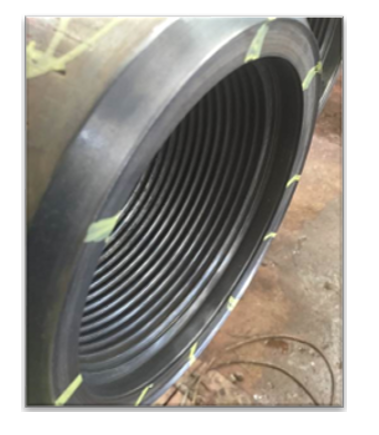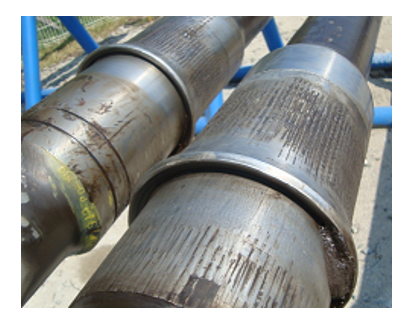Oil & Gas
API Makeup Torques are Recommended—Not Required
May. 17 2021
Do you know the right answer to this question: “What’s the makeup torque for an NC50 connection?” Here it is:
“I don’t know. I’d need to know the box OD, the pin ID, and the material to be able to take a swing at it.”
“Right, ok, it’s a 6-5/8" box, 3-1/4" pin, on a drill pipe tool joint.”
“Good. Now, how much torque do you want to apply?”
“Dude, that’s what I’m asking you …”
Lemme ’splain. If we don’t make up our connections to the correct torque value, we expose ourselves to failure risk. That gets our attention; choosing the wrong makeup torque could have, ahem, negative career implications.
But what are those failure risks? Let’s look at a couple of extreme possibilities. Imagine first that I spin my connection up, I bump the shoulders, and … that’s it. I apply precisely zero foot-pounds of makeup torque. (That’s zero Newton-meters for the metrically-inclined.) To be clear, the connection is fully engaged and all the threads are in the right place, we just haven’t applied any stress to the thing. Can I send it downhole like that?
Well, no; we have at least two failure risks in that case. First, if there’s zero stress in the connection, by extension that means there’s zero seal stress. If there’s zero seal stress, there’s no ability for our connection to contain fluid pressure. If it can’t contain fluid pressure, then it washes out as soon as we turn the pumps on. (And our boss starts giving us dirty looks and talking a bit more frequently to HR’s recruiting people.)
Also, if we’ve applied exactly zero makeup torque when we send it downhole, what happens when we start turning to the right? The string torque will obviously torque up the connection. The problem here is risk—sometimes we torque up connections downhole and it works out fine. But the fact that there’s additional loads applied while the connection is turning (tension, bending, pressure, maybe some other stuff), and that we don’t really have control over the speed or amount of makeup, means that downhole torque is much more likely to lead to thread damages like galling. Thus, we generally consider overtorqueing the connections downhole to be a design failure. Which means that, with zero torque applied to our connections, we have a drill stem torque capacity of … zero.
Ok, so zero Newton-meters of torque is a bad idea; you probably guessed that. What about the other end of the spectrum? Where we apply enough torque to take the connection right to the edge of its capacity?
That wouldn’t be a good idea, either. If you’ve almost yielded the material by just making the thing up, then any additional load will push it over the edge. Maybe even just picking it up out of the slips.
So let’s review: too little torque is bad because the connection can leak and/or make up downhole. Too much torque is bad because the connection can yield. The Goldilocks makeup torque will avoid both of those failures.
But … is there only one torque that meets that criteria? Only one torque that will avoid failure and keep your job intact? One True Torque to Rule Them All!?
Of course not. There’s a range of torques that will manage to avoid the ditch on both sides of the road, successfully not failing. And this, my poor, beleaguered reader, is the point of this whole article: there’s no such thing as an Optimum Torque.
“But wait!” You say. “API, that rich and hallowed institution of industry knowledge, publishes makeup torque values that we’re supposed to use!” Indeed; let’s look at how they get those numbers:
- For tool joints: When you’re done making up the connection, you should have a stress in the weaker side (whether that’s box or pin, it could go either way) of 72,000 psi. Some quick arithmetic shows that 72,000 is 60% of 120,000 psi, the minimum required yield strength for typical tool joints, so another way to describe the API recommended makeup torque is 60% of the yield torque.
- For most drill collars: The stress we’re aiming for is now 62,500 psi. Arithmetic won’t help here; drill collars can have minimum yield strength values of either 100 ksi (larger sizes) or 110 ksi (smaller sizes), but they all get the same target stress.
- For H90 drill collars: The target stress is now 56,200 psi. No, I don’t know why it’s different.
- For PAC drill collars: The target stress here is 87,500 psi. Nope, I don’t get this one, either. (It might be changing, though—I believe API’s committee is going to make it 62,500 psi like normal collars at some point in the future. Maybe.)
You know good and well that none of these are based on some sort of optimization. They’re nice, round, arbitrary numbers that work much of the time. API recommended makeup torques are just that—recommended.
Don’t hear what I’m not saying, though: I’m a big fan of API’s recommended makeup torques. We put them in DS-1 Volume 2 for handy reference; we even have apps that will give them to you for your particular situation. It is extremely helpful to have a standard that we all generally use to avoid confusion, and API’s particular standard really does work a majority of the time. When I used the word “arbitrary” above, please don’t think that’s a synonym for “bad.” It’s just that our industry wanted to pick something, and we did.
“Arbitrary” just means that we can change it. If we’re clever.



